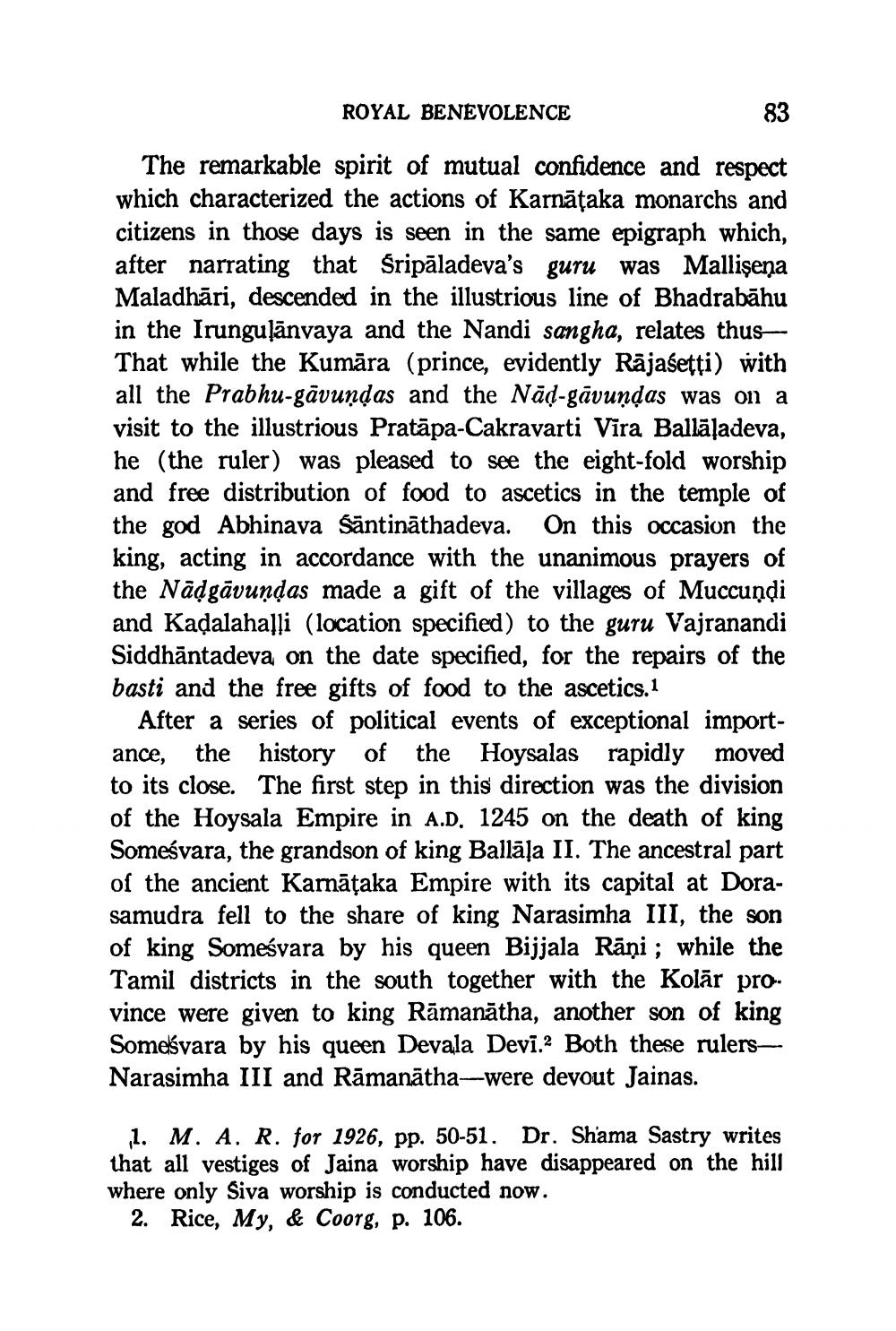________________
ROYAL BENEVOLENCE
83
The remarkable spirit of mutual confidence and respect which characterized the actions of Karnātaka monarchs and citizens in those days is seen in the same epigraph which, after narrating that Sripāladeva's guru was Mallisena Maladhāri, descended in the illustrious line of Bhadrabāhu in the Irunguļānvaya and the Nandi sangha, relates thusThat while the Kumāra (prince, evidently Rājaśetti) with all the Prabhu-gāvundas and the Nād-gāvundas was on a visit to the illustrious Pratāpa-Cakravarti Vira Ballāļadeva, he (the ruler) was pleased to see the eight-fold worship and free distribution of food to ascetics in the temple of the god Abhinava Sāntināthadeva. On this occasion the king, acting in accordance with the unanimous prayers of the Nädgāvundas made a gift of the villages of Muccundi and Kadalahaļļi (location specified) to the guru Vajranandi Siddhāntadeva on the date specified, for the repairs of the basti and the free gifts of food to the ascetics.1
After a series of political events of exceptional importance, the history of the Hoysalas rapidly moved to its close. The first step in this direction was the division of the Hoysala Empire in A.D. 1245 on the death of king Someśvara, the grandson of king Ballāļa II. The ancestral part of the ancient Karnāțaka Empire with its capital at Dorasamudra fell to the share of king Narasimha III, the son of king Someśvara by his queen Bijjala Rāņi ; while the Tamil districts in the south together with the Kolār province were given to king Rāmanātha, another son of king Someśvara by his queen Devala Devi.? Both these rulersNarasimha III and Rāmanātha—were devout Jainas.
1. M. A. R. for 1926, pp. 50-51. Dr. Shama Sastry writes that all vestiges of Jaina worship have disappeared on the hill where only Siva worship is conducted now.
2. Rice, My, & Coorg, p. 106.




